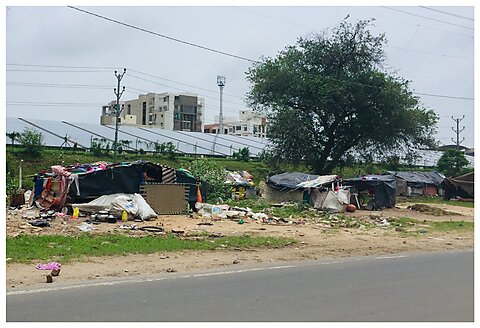
Marc Joffe
The City and County of San Francisco are fighting a court injunction against the removal of tent encampments from city streets. Instead of battling the injunction in court, officials should consider meeting the judge’s criteria for restarting these removals by providing space and shelter beds for the local homeless.
A Ninth Circuit judge ordered the city to stop dismantling homeless camps in response to a suit from an advocacy group, the Coalition on Homelessness (case 4:22-cv-05502). The court concluded that because the city lacks available shelter beds, forcing homeless individuals off the street violates the Eighth Amendment’s prohibition of cruel and unusual punishment.
Government officials expressed frustration with the injunction as they face public criticism over street conditions and hope to make a favorable impression on visitors attending November’s Asia‐Pacific Economic Cooperation (APEC) Leader’s Summit. Mayor London Breed participated in an unusual demonstration in front of the courthouse on Aug. 23 where the case is being heard. She told protestors:
We are compassionate, we are supportive, we continue to help people. But this is not the way. It is not humane to let people live on our streets in tents, use drugs. We have found dead bodies, we found a dead body in these tents. We have seen people in really awful conditions and we are not standing for it anymore. The goal here is to make sure that the court of appeals understands we want a reversal of this injunction that makes it impossible for us to do our jobs.
California Governor Gavin Newsom told the San Francisco Chronicle that the court order was “preposterous” and “inhumane.”
But rather than fight the injunction, the government could simply provide an adequate number of shelter beds and thereby meet the court’s main condition for removing encampments. There is a lot of unused and underused space around the city that could be pressed into service.
As I pointed out in a previous post, there are 400,000 square feet of available space in two subterranean levels of the Salesforce Transit Center. These levels were built to accommodate future train service, but the required rail extension has yet to be funded and would take years of construction once funding is secured. So, this space could be used as shelter for an extended period.
When I previously suggested this idea readers expressed concern that it would concentrate too many homeless people in one place and that the facility lacked natural light. But there are alternatives.
The city has a large volume of vacant office and retail space that could serve as temporary shelter. CBRE, a commercial real estate firm, recently estimated San Francisco’s office vacancy rate at 31.6%, a record high. This translates into more than 27 million square feet of available space. Many of the empty offices are in older, less desirable buildings that will likely be vacant for many years, even if the local office market rebounds. The city should be able to rent many of these older offices for use as shelter.
While converting offices to permanent housing is costly, the same should not be the case for temporary shelter. Repurposing offices as apartments requires substantial construction and demolition but temporary shelter occupants do not need all the costly improvements, like private bathrooms, included in permanent apartments. Shelter dwellers do need showers, and offices typically lack them, but portable showers can be installed at a reasonable cost.
In nearby San Rafael, CA, a private social services organization converted a floor of an older office building to a shelter for up to 45 people in 2020. The group, Homeward Bound of Marin, outfitted the office floor “with beds, lockers and storage for residents as well as a dining and sitting area”. San Francisco should be able to adopt and scale up this approach.
The city also has hundreds of vacant storefronts that could each house a smaller number of individuals. City College of San Francisco suffered a catastrophic enrollment drop before and during the pandemic, so it could also make space available for shelter purposes.
Although plenty of space is available in San Francisco, it remains a densely populated, high‐cost area. For this reason, the city government might consider working with the state and nearby counties to implement a regional solution to sheltering the city’s homeless. But implementing that idea would require flexibility from the plaintiff and the judge in San Francisco’s case.
Unfortunately, homeless advocates like those who filed suit often have a fixed idea about what a “right to housing” should look like: permanent, supportive apartment units in the city proper. But as Los Angeles and other California cities have found, building this type of housing is both time‐consuming and expensive.
San Francisco, other California cities, and the state government have collectively spent billions of dollars on homelessness, but tens‐of‐thousands are still living on city streets creating unsafe and unsanitary conditions. Rather than continuing to overspend without solving the problem, California governments should implement more cost‐effective albethey less idealistic approaches, either on their own or with private organizations more accustomed at focusing on the bottom line.








